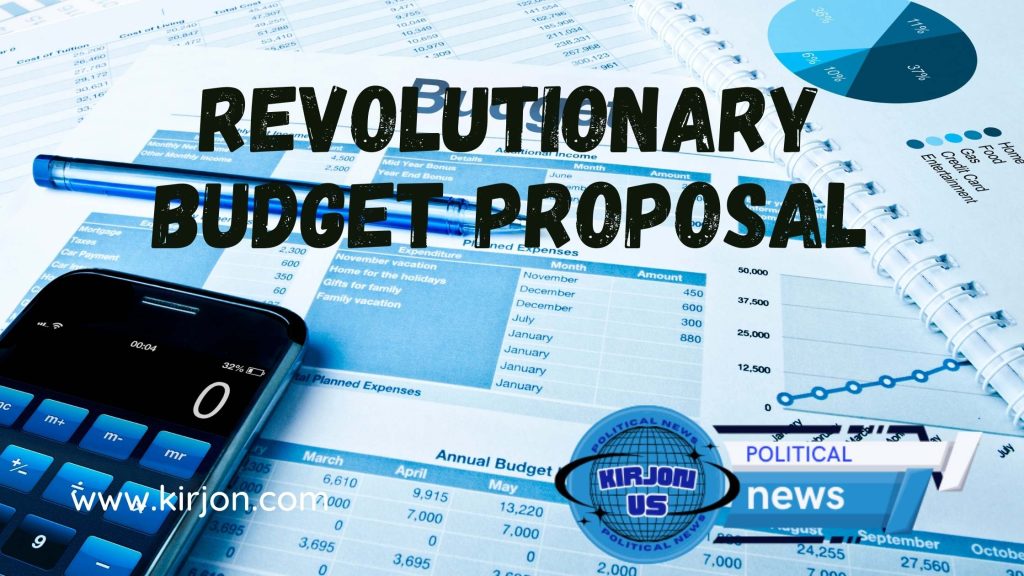In the realm of global affairs, the United States stands firm in its commitment to fostering alliances and partnerships that transcend borders. Such collaborations not only address shared challenges but also contribute to the realization of a world characterized by openness, inclusivity, security, and prosperity. Central to our national security interests is the imperative to fortify and maintain these partnerships, both abroad and domestically, thereby bolstering U.S. leadership on the world stage. The President’s Fiscal Year (FY) 2025 Budget Request underscores this commitment by allocating resources to the Department of State and the U.S. Agency for International Development (USAID) to amplify collaboration with international counterparts, with a focus on promoting economic prosperity, regional security, and democratic values.
Bolstering Migration Management and Cooperation

Under the FY 2025 budget proposal, the United States seeks to allocate $224.9 million in direct bilateral assistance to support comprehensive migration management strategies. This initiative aligns with the principles outlined in the 2022 Los Angeles Declaration on Migration and Protection, underscoring the importance of safe, orderly, lawful, and humane migration practices. Collaboration with partners in the Western Hemisphere is paramount to effectively addressing migration challenges and ensuring regional stability.
Addressing Root Causes in Central America
A significant portion of the budget, exceeding $1 billion, is earmarked for the implementation of the Root Causes Strategy in Central America. This strategy encompasses multifaceted efforts aimed at combating gender-based violence, enhancing citizen security, fostering economic resilience, and reinforcing democratic governance. By tackling the underlying drivers of instability and insecurity, the United States endeavors to foster long-term prosperity and stability in the region.
Fortifying Partnerships in the Middle East and North Africa
The budget allocates $7.6 billion to uphold enduring partnerships in the Middle East and North Africa, underscoring the United States’ commitment to joint economic, development, and security initiatives. Key allies such as Israel, Jordan, and Egypt stand to benefit from enhanced cooperation, aimed at addressing regional challenges and advancing shared interests. Additionally, increased assistance is earmarked for supporting the Palestinian people and bolstering peacebuilding efforts in the West Bank and Gaza.
Investing in the Indo-Pacific Region

Recognizing the strategic importance of the Indo-Pacific region, the FY 2025 budget proposes a substantial investment of $4 billion in Indo-Pacific Partnerships and Alliances. This includes critical bilateral and regional foreign assistance aimed at strengthening ties with key partners. Initiatives such as engagement with the Association of Southeast Asian Nations (ASEAN) and support for regional frameworks underscore the United States’ commitment to promoting security, prosperity, and connectivity in the Indo-Pacific.
Prioritizing African Development and Stability
The budget allocates $322.5 million to support commitments made during the 2022 Africa Leaders Summit. These commitments encompass initiatives aimed at fostering stable, inclusive economies, addressing the climate crisis, promoting democracy, and championing human rights. By investing in Africa’s development and countering the influence of external actors, the United States seeks to renew and strengthen alliances across the continent.
Leveraging Multilateral Diplomacy
In line with its commitment to multilateralism, the United States earmarks $2.9 billion to renew and strengthen its leadership in multilateral diplomacy. This includes contributions to organizations such as the United Nations (UN), UNESCO, and NATO, as well as timely payments of UN peacekeeping assessments. By engaging with multilateral platforms, the United States aims to address global challenges collectively and uphold international norms and standards.
Preparing for Global Leadership: G-20 Summit Hosting

As the United States prepares to host the G-20 summit in 2026, the FY 2025 budget includes $63 million for critical investments necessary for successful summit preparations. This underscores the nation’s commitment to global leadership and diplomacy, as well as its role in shaping the global agenda.
In conclusion, the President’s FY 2025 Budget Proposal reflects a strategic commitment to enhancing global partnerships and addressing shared challenges. By allocating resources to key initiatives across various regions, the United States aims to promote stability, prosperity, and democratic values on the world stage.
FAQs
1. What is the President’s FY 2025 Budget Proposal?
The President’s FY 2025 Budget Proposal outlines the administration’s spending priorities and allocations for the fiscal year 2025. It encompasses various sectors, including international relations, domestic programs, defense, and more, reflecting the government’s fiscal plans and policy objectives.
2. Why is the President’s FY 2025 Budget Proposal significant?
The FY 2025 Budget Proposal is significant as it reflects the administration’s priorities and vision for the nation’s future. It outlines funding allocations for critical initiatives, such as international partnerships, economic development, security, and diplomacy, shaping both domestic and foreign policy agendas.
3. What are the key highlights of the FY 2025 Budget Proposal regarding international partnerships?
The FY 2025 Budget Proposal prioritizes strengthening global partnerships and alliances to address shared challenges and promote mutual interests. Key highlights include significant investments in migration management, root cause strategies in Central America, partnerships in the Middle East and North Africa, Indo-Pacific alliances, African development initiatives, and multilateral diplomacy efforts.
4. How does the budget proposal address migration management and cooperation?
The budget proposal allocates resources for bilateral assistance aimed at supporting safe, orderly, lawful, and humane migration management. Collaboration with Western Hemisphere partners is emphasized, with a focus on implementing frameworks such as the 2022 Los Angeles Declaration on Migration and Protection.
5. What initiatives are funded under the Root Causes Strategy in Central America?
The FY 2025 budget proposal allocates over $1 billion to support the implementation of the Root Causes Strategy in Central America. This includes efforts to combat gender-based violence, enhance citizen security, promote economic resilience, and strengthen democratic governance, aiming to address underlying factors driving migration and instability in the region.
6. How does the budget proposal support partnerships in the Middle East and North Africa?
The budget proposal includes $7.6 billion to uphold enduring partnerships in the Middle East and North Africa, focusing on joint economic, development, and security initiatives. Key partners such as Israel, Jordan, and Egypt stand to benefit from increased assistance, alongside support for peacebuilding efforts and assistance for the Palestinian people.
7. What is the significance of investing in Indo-Pacific Partnerships and Alliances?
Recognizing the strategic importance of the Indo-Pacific region, the budget proposal includes a substantial investment of $4 billion in Indo-Pacific Partnerships and Alliances. This aims to strengthen bilateral and regional ties, promote security, prosperity, and connectivity, and advance shared interests in the region.
8. How does the budget proposal contribute to African development and stability?
The FY 2025 budget proposal allocates $322.5 million to support commitments made during the 2022 Africa Leaders Summit. This includes initiatives to foster stable, inclusive economies, address the climate crisis, promote democracy, and counter external influence, reflecting the United States’ commitment to renewing and strengthening alliances across the continent.
9. What role does multilateral diplomacy play in the budget proposal?
The budget proposal earmarks $2.9 billion to renew and strengthen U.S. leadership in multilateral diplomacy, supporting organizations such as the United Nations (UN), UNESCO, and NATO. By engaging with multilateral platforms, the United States aims to address global challenges collectively and uphold international norms and standards.
10. How is the budget proposal preparing for the United States’ hosting of the G-20 summit in 2026?
As the United States prepares to host the G-20 summit in 2026, the FY 2025 budget proposal includes $63 million for critical investments necessary for successful summit preparations. This underscores the nation’s commitment to global leadership and diplomacy, as well as its role in shaping the global agenda.
These FAQs provide insight into the key aspects of the President’s FY 2025 Budget Proposal, highlighting its significance and implications for international partnerships and global affairs.







